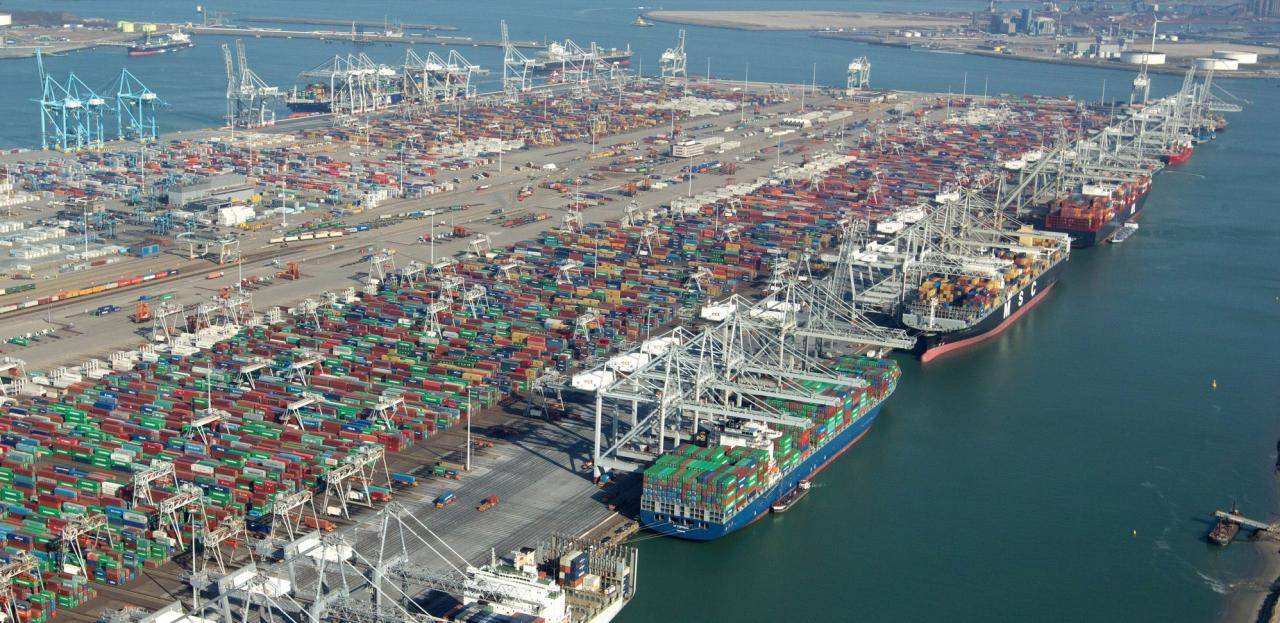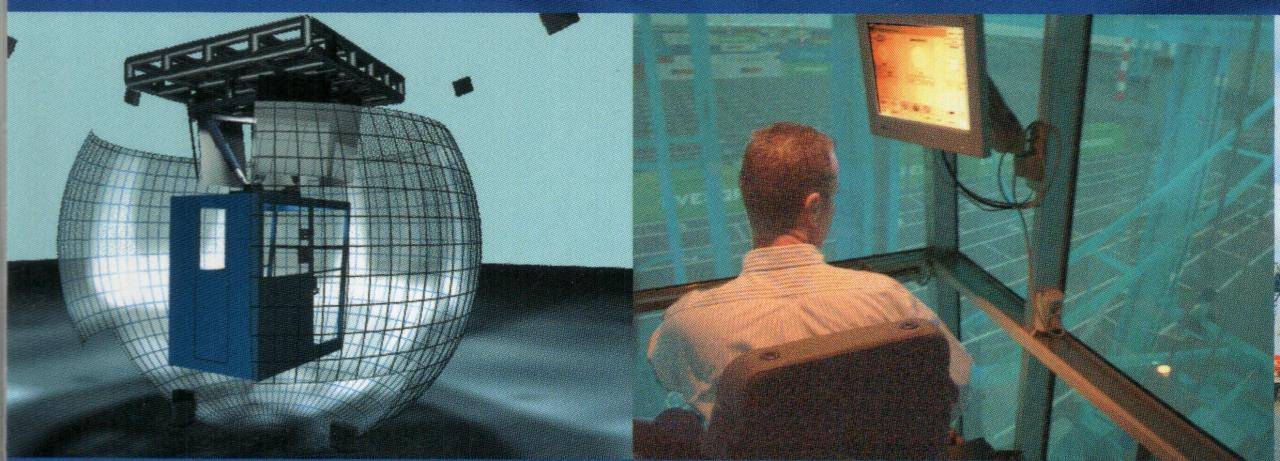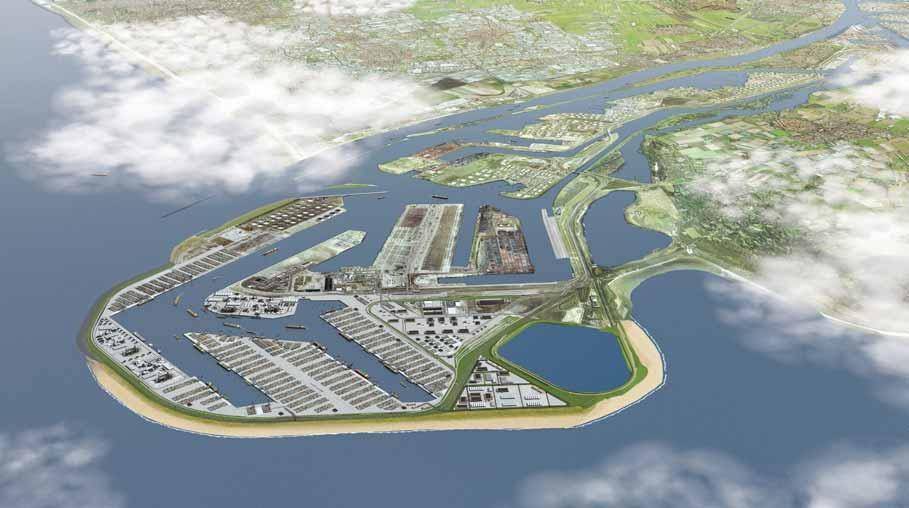The journey of CONTROLS: DPW Antwerp
DPW ANTWERP
DP World Antwerp Gateway is a high-class semi-automated terminal located on the left bank of the Port of Antwerp. Since 2007, it has been the first terminal in the global DPW portfolio to operate automated stacking cranes, providing container storage for a large part of the terminal stacking capacity. The other part is done by a fleet of 1 over 2 and 1 over 3 straddle carriers. This mixes the benefits of a high stacking density on the yard by the use of ASCs with the flexibility of straddle carriers. Combined with truck loading automation and world-class twin, tandem and quad ship-to-shore cranes, it delivers the tools to successfully run a container terminal in the Hamburg-Le Havre range.
THE CONTROLS MODEL
Because of the high degree of automation in the terminal and the drive for optimisation, a good working TOS is essential. The operations have to be highly performant, even when in project roll-out mode and after every update. This is where emulation kicks in for DPW Antwerp.
The terminal came in contact with the CONTROLS product during the 2009 TOS implementation of Navis N4, coming from Cosmos. At that time, the emulation model was used for TOS testing in the pre go-live stage. This way, DPW Antwerp became acquainted with the benefits of emulation.
After this TBA launched its new fully developed, now Java-based emulation platform CONTROLS2. Because this new version could do much more, DPW Antwerp decided to upgrade, in order to use the potential of emulation to its maximum. This was the pilot project for TBA in 2011 to integrate CONTROLS2 with Navis XPS and ECN4, bringing emulation support to the latest generation of Navis TOSs.

The CONTROLS2 model of DPW Antwerp was implemented with a high level of detail, modelled according to equipment specifications such as Gottwald’s trolley position-dependent gantry speed system of the ASCs and load-dependent quay crane (QC) hoisting speeds. Realistic operator behaviour was implemented in the emulation model as well, resulting in smooth QC spreader paths and realistic straddle carrier driving. The emulation model was validated against terminal data to ensure valid emulation results.
CONTROLS USAGE
Ever since DPW Antwerp has embraced the usage of CONTROLS2 in its optimisation team for multiple purposes:
- TOS optimisation: Expert Decking and PrimeRoute offer advanced functionality and can bring major productivity improvements to terminals. These modules use complex parameter sets. Changing one parameter can affect the behaviour in unexpected manners, even more so on a terminal with multiple types of stacking equipment. After determination of the desired improvements and corresponding parameter changes, CONTROLS brings the possibility to try the changes in real live situations and compare the outcomes to the benchmark. This way, a sensitivity analysis of the parameter can be made, showing the impact and side effects of the setting. Based on the outcome, the scenario is reset and run again with the lessons learned from the previous emulation experiments. This leads to a thorough understanding of the complex parameters, and optimal configuration for the specific terminal
- Patrick Van de Walle, Optimization Manager, says: “In the field of optimisation we have had several successes with the help of CONTROLS2. It has allowed us to verify the use of the Navis Autostow functionality and to determine the base parameter settings. Also, CONTROLS2 made it possible to reduce our horizontal driving distance by validating the renewed parameter sets for Expert Decking and Prime Route”
- TOS upgrade validation: Before the rollout of every TOS upgrade, DPW Antwerp runs complex emulation scenarios that allow the testing of the new TOS version to high volume scenarios under dynamic, near-to live circumstances. This enables validation of both stability and productivity when using the new TOS version, prior to applying it to the production environment. In this process, DPW Antwerp focuses on the handover scenarios between manual and automated equipment. This is a very important aspect for the semiautomated terminal and shows the variety of benefits that CONTROLS2 can deliver.

DPW Antwerp has used CONTROLS2 in conjunction with GTE and measurement tools to calculate the impact of significant civil changes to the terminal. This allowed formulating the operational impact for civil restructuring.
GRAPHICAL TERMINAL EDITOR
As part of the CONTROLS suite, Graphical Terminal Editor (GTE) can be used to modify the terminal layout in the emulation model. The GTE application is aimed to support the CONTROLS user with the configuration of the terminal layout in a visual, user-friendly manner. The user can modify the terminal by adding or changing container terminal objects, such as stack, road, quay, parking places, buildings, and so forth.
The real dimensions of each object can be entered and, for instance, sourced from CAD drawings of the terminal. For roadways, settings such as driving directions, maximum speed and the allowed equipment on each road can the configured. Extra yard blocks can also be added, or existing blocks changed. The output of the GTE application can be imported by the user into the CONTROLS2 model.
CONCLUSION
As witnessed by the examples in this article, CONTROLS has brought the benefits of emulation to the full extent to DPW Antwerp. In order to go even beyond, DPW Antwerp has decided to extend its CONTROLS model to include a full N4 cluster in the emulation setup. This will enable DPW Antwerp to further expand the scope and deployment of emulation. TBA will upgrade the emulation environment of DPW Antwerp to support this extension in the same user-friendly manner. For instance, an upgrade of the MONITOR application, another part of the CONTROLS suite, will allow the users to start an emulation experiment by a single mouse click, including N4 database restore and startup of N4, regardless of the size of the N4 cluster.
In summation, CONTROLS emulation will continue to support DPW Antwerp in this ever-evolving industry.
This article has been published in Port Technology Magazine in June 2016.
Share this
You May Also Like
These Related Stories

Applying new technologies in an existing automated terminal

Human Machine Interfaces - the key to productivity?
